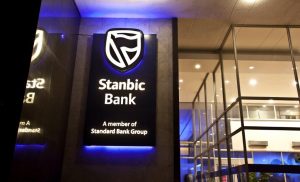

STANBIC Bank Zimbabwe has been awarded top class rating for its operating performance across the board by Africa’s leading credit rating agency GCR Rating (GCR).

Stanbic Bank’s business profile was rated positive on the back of its being one of the leading banks in Zimbabwe with a high market share across loans and deposits and a strong franchise within the local market.
The leading financial institution was affirmed national scale long-term issuer and short issuer ratings of AA(ZW)/ A1+(ZW)respectively and deemed to be having a solid and stable outlook.
GCR, which has established itself as the leading rating agency in Africa, accounting for the majority of all ratings accorded on the African continent, said in a statement, the affirmation reflected the bank’s resilient financial profile within a challenging operating environment.
The leading rating agency has a local presence in Mauritius, South Africa, Nigeria, Kenya and Zimbabwe, and has the largest rating team in Africa which gives it unmatched on-the-ground presence, as well as easy access to market participants.
It said Stanbic Bank’s affirmation as a top performer was underpinned by its strong competitive positioning, healthy capitalisation, relatively stable funding structure and adequate liquidity which piggy-backed on the strength of its parent company, Standard Bank Group of South Africa.
“Furthermore, the ratings are complemented by implicit/explicit group support from the bank’s parent, Standard Bank Group Limited (“SBGL” or “the group”). The outlook is restrained by the hyperinflationary environment, adverse unquantified ramifications of the on-going COVID-19 pandemic and monetary policy inconsistency,” said GCR in the statement.
Stanbic Bank’s business profile was rated positive on the back of its being one of the leading banks in Zimbabwe with a high market share across loans and deposits and a strong franchise within the local market.
The Standard Bank Group subsidiary offers a diverse range of products in the local market, distributed through a well-established local franchise.
“…GCR positively notes Stanbic’s classification as a domestic systemically important bank (“D-SIB”). The bank’s operations are restricted to Zimbabwe given its position within the broader SBGL. Revenue stability is good and in line with top tiers,” said GCR.
It acknowledged that Stanbic enjoys a “demonstrated track record” of consistently sound revenue generation, in line with top tier norms.GCR took into account the risk of value erosion of the monetary assets and capital as a result of hyperinflation and exchange rate devaluation, balancing the bank’s value preservation strategies supported by a significant foreign currency balance sheet.
In coming up with the ratings, GCR said it considered Stanbic Bank to be adequately capitalised, supported by a capital ratio of 19.8% at 31 December 2020.
One of the issues considered for the high rating for Stanbic Bank is its regulatory core capital which is way above the December 2021 requirement of USD30m, as of May 2021, based on the prevailing interbank rate.
GCR said this was highly commendable given the pressures for exchange rate depreciation due to widening forex supply gap which could exert pressure on maintaining the core capital above the USD30m threshold.
“Notable contribution towards capital growth continues to come from non-interest income primarily foreign exchange. We expect pressure on profitability to persist balancing the impact of hyperinflation on the net monetary asset balance sheet offset by growth in foreign currency income. Given the adverse operating conditions, reserve coverage was adequate,” said GCR.
GCR said Stanbic’s credit losses of 3% at December 2020 were within top tier industry range but this mostly reflected stage 2 transitions from the weak operating environment.
Stanbic’s has a very low stage 3 or gross non-performing loan ratio of below 0.1%, however this strength is partially offset by moderately high single name concentrations (top 20 was 41% of gross advances in March 2021) and a high proportion of unsecured lending (over 90%).
GCR noted that the bank has maintained a loan portfolio of good quality exhibiting low delinquencies over the review period, supported by stringent underwriting standards and rigorous post-disbursement monitoring, despite a highly volatile operating environment.

“That said, there is some credit risk due to impact of harsh operating conditions and COVID-19 on affected borrowers. Foreign exchange risk is moderate, in the local context, the exchange rate has been stable since Q42020 and Stanbic ran a currency net open position, to the equivalent of 19% of shareholder funds in Q12021.”
The leading rating agency rated Stanbic Bank positively for its funding and liquidity on the back of a relatively stable funding structure and adequate liquidity.
GCR said Stanbic Bank is exposed to the same structural funding as most banks in Zimbabwe, namely demand customer deposits (mostly corporate) and short-term maturity mismatches in its asset/liability profile. In March 2021, c.56% of deposits were in foreign currency and the top 20 c.32% of total deposits.

“Therefore, the bank remains susceptible to external shocks, further exacerbated by the challenging operating environment. To manage liquidity risk, the bank holds high levels of liquidity mitigating structural funding risks. While local currency liquidity is tight (due to stringent regulatory monitoring), foreign currency liquidity is appropriate. At FY2020, FX liquid asset coverage of the FX funding base was very good at 113%. Furthermore, GCR liquid asset coverage of customer deposits was adequate at 77%.,” said GCR.
It said the ratings benefit from ongoing support and integration of the bank with its ultimate parent, the Standard Bank Group. Stanbic Zimbabwe is a wholly owned subsidiary of Standard Bank Group Limited. Although not a material asset or revenue contributor, there is evidence of technical and integration support from the parent.
GCR said Stanbic bank’s outlook is Stable, balancing its expectation that the financial services institution will maintain a sound financial profile supported by low asset quality risk, sound internal capital generation and adequate levels of liquidity against the turbulent operating environment.